
Foods turn brown in one of two general ways. Enzymatic browning occurs when food is exposed to air; it's avoided with of fresh fruits and vegetables but gives coffee, tea and cocoa their characteristic colors. Non-enzymatic browning happens when foods are exposed to heat. These are the reactions that can give cheese a golden brown color and deepened flavor.
Browning Through Caramelization
Some of the browning and flavor changes when cheese is placed under heat may be due to caramelization. Caramelization is a non-enzymatic browning reaction that happens when the heat breaks sugar molecules apart. The longer food is heated during caramelization, the more those molecules change, resulting in color changes from a pale white or yellow to deep yellows and finally to golden browns. Caramelization also brings out sour, butter, fruity, sherry-like, butterscotch, caramel or nutty aromas and flavors.
Browning Through the Maillard Reaction
Most of the browning you see in cheese exposed to heat is due to the Maillard reaction, a non-enzymatic browning process named after the 19th-century scientist who first observed it. Cheese browns under this process because high heat causes amino acids and simple sugars to rearrange in a pattern that reflects brown light. New aroma and flavor molecules are also formed, resulting in incredibly varied flavor changes. Cheese can develop earthy, meaty, savory, floral, sulfur and chocolate aroma and flavor changes in addition to those found in caramelization.
Choosing Browning Cheeses
Cheeses don't all melt and brown in the same way. When cheese is heated, it falls into one of three basic categories: stretchy and stringy, smooth and flowing and non-melting. The "melting and flowing" category is the largest, and these cheeses brown the best. Robust, low-moisture robust choices like cheddar, gouda, gruyere, Monterey jack and fontina brown nicely. Very hard, aged cheeses like Parmesan must be grated first. Stringy cheeses like mozzarella and provolone must be mixed with a firmer cheese for good browning results.
Making Browned Cheese
If cheese melts too quickly or at too high a temperature, the proteins can tighten together and squeeze out fat and moisture, giving you a firm blob of cheese in a puddle of fat. For successful browning reactions, grate your cheese and let it reach room temperature before cooking. This reduces the amount of time it needs under heat before melting and browning. Keep an eye on your temperature. Although Maillard reactions happen under high heat, keep the temperature below 355 degrees Fahrenheit. Cheese burns at higher temperatures, causing an unwanted bitter flavor.
Related Articles
How to Pan-Fry Cheese

Can You Melt Ricotta?
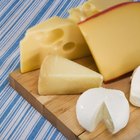
Aged Cheeses That Do Not Melt
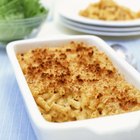
How to Prevent Cheese Separation in ...
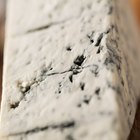
What Good Bacteria Is in Cheese?

How to Store a Cheese Wheel With a Wax ...
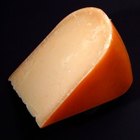
What Is Animal Rennet?

Does Blue Cheese Spoil?

What Types of Cheeses Are Unpasteurized?

How to Store Cheese
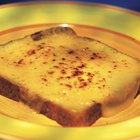
What Kind of Cheese Is a Low Melting ...

Do You Thaw Frozen Cheese Before ...
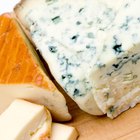
How to Crumble Gorgonzola Cheese

How to Freeze Cheeses

Difference Between White Cheddar & ...
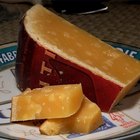
Facts About Gouda Cheese
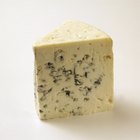
The Dangers of Roquefort Cheese

The Best Melting Cheeses

How to Freeze Mascarpone
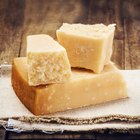
MSG and Parmesan Cheese
References
Writer Bio
Maggie Daniel has been writing on food, home, parenting, nature and travel for regional publications since 1999. She holds a B.A. in communications and environmental science from California State University, Monterey Bay.
Photo Credits
Eising/Photodisc/Getty Images